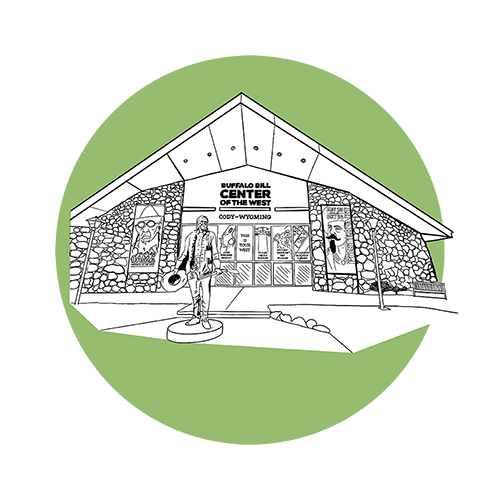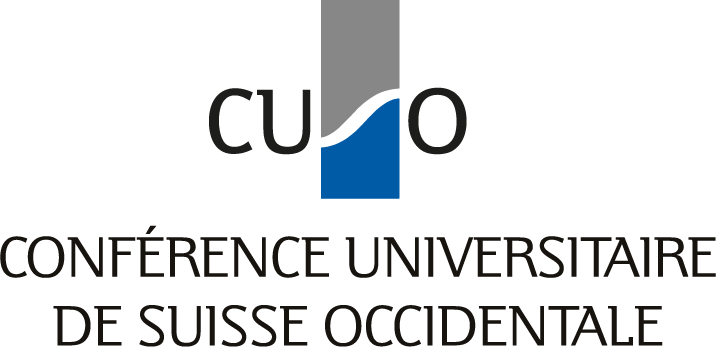The Mirage of the Wild West
Keywords: Miners, hunters, traders, cowboys, outlaws, trappers, saloons, Indians, DAUGHTER by Beyoncé
On the day we were supposed to leave Yellowstone Park and drive to Cody, we get extremely distracted by literally everything on the way. After we see Old Faithful erupt, we decide to see even more geysers. We walk the broad walk, we see Castle Geyser and other creatively named craters, we reach Morning Glory Pool, we turn back around, and drive along the lake, stop on the shore, stop again to see a Grizzly (!), and drive past a fox casually walking on the road with a dead rodent in its mouth. All of this happens after 6pm when the average Swiss citizen has started eating dinner already. We are hungry.
We arrive at Pahaska Teepee Lodge and think it is our salvation. We enter and are greeted by an imposing taxidermied Bison head,
several taxidermied elk heads,
historic portraits of people with guns,
and a biker at the bar with a long ponytail and a bandana having steak, fries, some green beans, and a coke.
After giving us a second to take in the scene, a very friendly waiter appears, informing us that the lodge was founded by Buffalo Bill himself and that, sorry, the kitchen had just closed. He wants to offer us two-day old turkey sandwiches, but we decline when we see the state of the lettuce. And that is our first encounter with the Wild West. We do not think much of it yet as we snack away on the packets of crisps we buy instead.
The next day, we go to the Buffalo Bill Center of the West. We learn that it is FIVE AMAZING MUSEUMS, ONE WILD WEST:
The Draper Natural History Museum
The Buffalo Bill Museum
The Plains Indian Museum
The Whitney Western Art Museum (yes, the same Whitney family as New York)
The Cody Fire Arms Museum
The entrance hall is the center point from which all five museums can be accessed. In this center point stands another taxidermied animal, this time a bear (here it goes again!). We wonder what the distribution of visitors is, as we see people stream into the Cody Fire Arms Museum. We are told there are no exact numbers. Our three days at the Center, however, give us the impression that the Plains Indian Museum and the Whitney Western Art Museum are not the biggest draw.
Opposite, a hologram of Buffalo Bill (now I am no longer sure if it is him but who else would it be) beckons visitors to come see his museum. Behind this hologram is a life-size print of a photograph of young William F. Cody. They are, in fact, the same person. At some point in his life, William F. Cody becomes Buffalo Bill. The museum is dedicated to this transition, from son of an abolitionist to mythological character of the Wild West.
The museum charts his childhood, his marriage, his time in the army, his time as frontier scout and his many other businesses. Cody claimed to have had many jobs, “including trapper, bullwhacker, wagonmaster, stagecoach driver, hotel manager and Pony Express rider” (Wikipedia), but no one knows if this was true, it was the Wild West after all. At one point, in the later 1860s, he becomes supplier for a railway company and is said to have killed more than 4000 buffalo to feed the workers. Hence, his nick name.
Very soon, his story is picked up on the East Coast. A New Yorker writer bases a fictional novel around Buffalo Bill. There are countless sequels. He fights the Indians, Blacks, Chinese, the Cossacks, and other Outlaws. In the stories, he mostly rescues a damsel in distress. The stories perpetuate his existence, multiply his adventures, and increase his heroism manifold. William F. Cody becomes Buffalo Bill and all the many fabricated adventures become his too.
There is a trace of serial entrepreneurship. He capitalises on the success of the character and finds a model that will make him even more famous. His story reminds us of a certain famous entrepreneur turned politician elected president.
At the museum, there is a section called THE SHOWMAN. It explains how Buffalo Bill created BUFFALO BILL’S WILD WEST AND CONGRESS OF ROUGH RIDERS OF THE WORLD. His actors are from all across the world. There are Mexican vaqueros, Arabs of the Desert, Russian Cossacks, South American Gauchos, Cavalry of all Nations. Because that too, was the Wild West, everyone from everywhere coming or being brought to this supposedly empty land of endless resources, forced or willingly, ready to extract.
He stages Buffalo hunts, Indian attacks, Indian massacres, clay pigeon shootings, army drills and horse-riding skills. The show is so successful in capturing the imaginations of all audiences that it is exported to Europe. They even perform in front of Queen Victoria. A meeting between two Empire projects.
Buffalo Bill is the precedent of the cowboy and the American dream, a self-made man. Apart from the novels and stories, he is materialised and immortalised in paintings to this day.
And as we learn on the bus tour, he may well have been the most famous person in the world in 1900.
It is a stifling hot day, Chuck and Wade start the trolley tour at a feverishly fast pace that they maintain for the whole ride. They tell us, “give us an hour and we’ll give you 100 years”. And so they do and much more too. We think we are on a tour around Cody, Wyoming, but within the first minute we learn that the town was founded by and named after William F. Cody aka Buffalo Bill. The tour is as much about the man, the myth, the legend as it is about history, architecture or the landscape.
Cody was Buffalo Bill’s last business venture. A gateway to the new National Park. A town built for tourists with streets wide enough to fit his show’s equipment. Today, the high street, the city center, is wide enough for four lanes (Arran says it needs to be down town, high street is too European). We, the Europeans, all think it’s plenty of space.
Cody is so small that, to fill an hour on the trolley, we circle around the same streets over and over again. Like goldfish we are meant to forget that we were in the same place only minutes ago. Every time, something or someone else is the focus of the story. Wade points out the window and first we learn about the mayors and politicians, then about the prostitutes and the redlight district, and finally, about the current property prices and ranch sizes in Wyoming (they are on average bigger than in Texas!). Everything is a commodity, everything something to be advertised, to be sold, to be consumed. Oh, and of course, coal, oil and gas are re-occurring actors, because of them, Wyoming’s state budget runs on a surplus.
The tour starts and ends at Irma’s, the town’s original saloon, named after Buffalo Bill’s daughter. As we pull out of the driveway, a group of Amish tourists is gathered on the wooden porch. Their dress and the architectural backdrop make it look like a scene from the 1800s. As we return, a theatre group is getting ready to stage a shootout. The idea of the Wild West is reenacted constantly.
The building itself is on the National Historic Register, it has been restored and maintained for a love of Western history and architecture. Its interior is not minimalist and strikingly similar to the Pahaska Teepee Lodge (we now know that the people with guns on the historic photos are Buffalo Bill himself, his scout companions and Annie Oakley, little miss sure shot).
There are more taxidermied elk,
probably a buffalo head somewhere,
taxidermied turkeys,
chandeliers made from elk antlers,
stars and stripes rosettes,
lavish carpet and floral wallpaper,
tin ceiling tiles,
and lots of people who do not care about the way they dress.
The food is good. The portions are huge. We sit at a long table and enjoy being together. We ask the waiter for a photo, and he says, yes, he’ll take one of us behind the bar. We ask him what bar? He says, well, the cherrywood backbar presented to Buffalo Bill by Queen Victoria herself.
It takes us a moment, in fact it takes us these three days at the Buffalo Bill Center of the West, one hour on the trolley tour through Cody, one night at the Rodeo, and one dinner at Irma’s, to realise that the Wild West is many things except real. It is as much an amalgamation of artefacts or a representation through images and accounts, as it is a never complete idea, an ideal, an imaginary, a mirage. The Wild West is what you make of it.

Author: Kiah Rutz, [email protected]
suggested citation:
Rutz, Kiah. 2025. “The Mirage of the Wild West”. An Ethnographic Multimodal Journey Through Yellowstone National Park and the Wind River Reservation. CUSO. https://anthropology.cuso.ch/yellowstone/09-buffalo-bill-center-of-the-west


